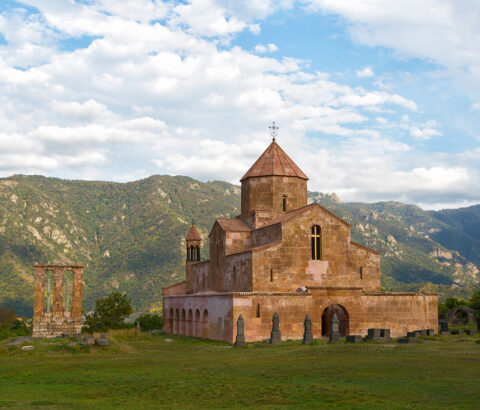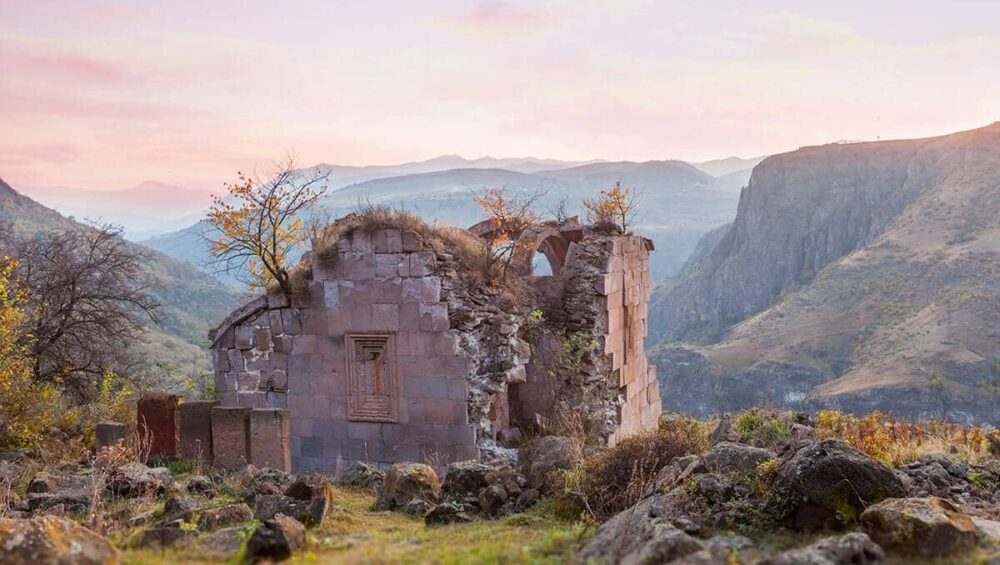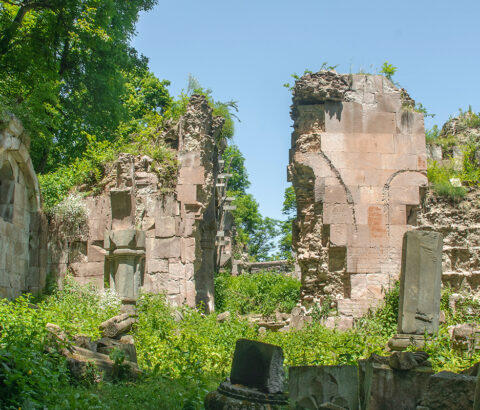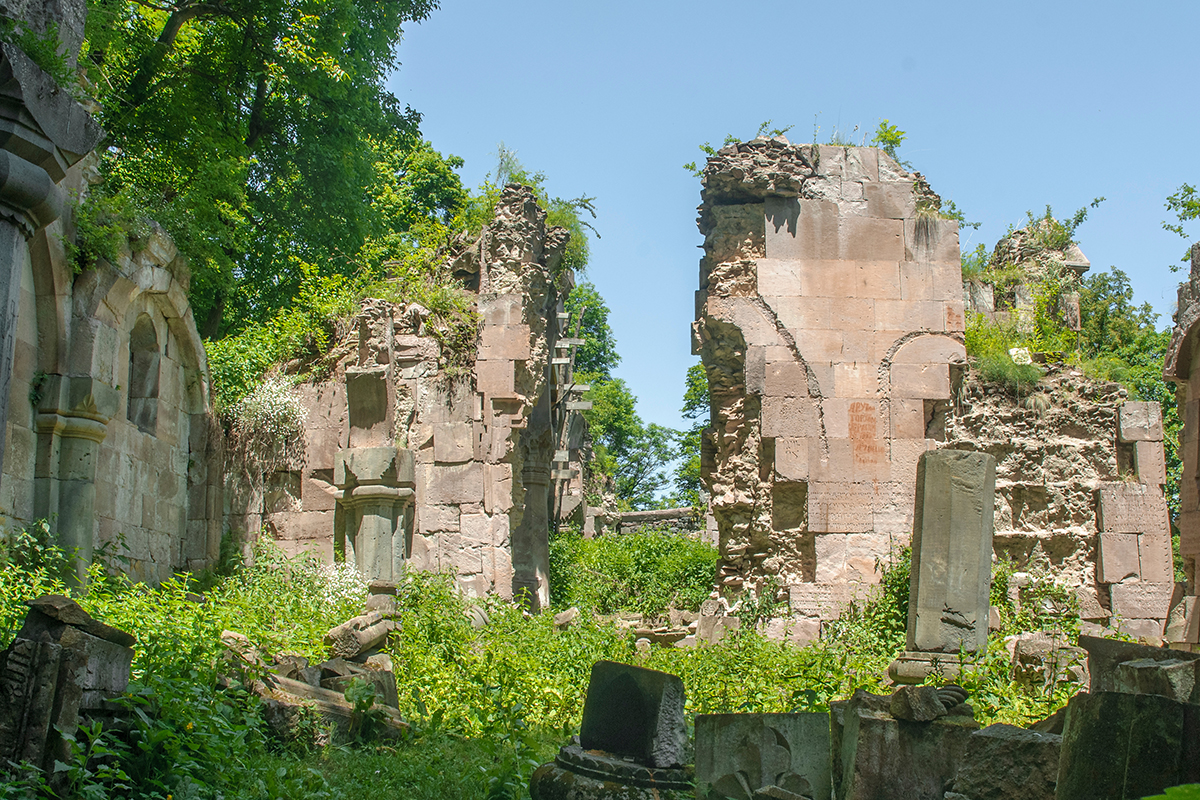Located on a vast plateau overlooking the majestic Debed canyon, about 10 km south of the town of Alaverdi, the village of Odzun is one of the ancient settlements of the Gugark province of the historic Kingdom of Armenia. Odzun is a renowned village in Armenia for it is not only the birthplace of one of the catholicoi of the Armenian church, Hovhannes Odznetsi (John of Odzun), but also home to a unique Armenian church, the Basilica of Odzun.
The village derives its name from the Armenian word “to ordain,” “otsel.” According to Christian tradition, in the 1st century Thomas the Apostle, one of the twelve apostles of Christ, had priests ordained here, thus the name of the village. It is believed that before his departure to India, Thomas the Apostle had buried the Christ’s swaddling clothes, above which a small church was built. Later, in the 4th century, King Tiridates the Great and Gregory the Illuminator built a basilica on the site, which was gradually enlarged in the coming centuries, obtaining its present look in the 8th century, with the exception of the bell towers added in the late 19th century.
 Quick Info
Quick Info
What's Nearby
The domed basilica of Odzun, one of the few surviving basilicas in Armenia, is a fine example of early medieval Armenian architecture. A distinctive feature of the church is the external arcaded cloisters on its northern and southern sides, which add extra space and volume to the structure. The exterior and interior walls are decorated with elaborate ornaments, bas reliefs, and carvings typical of 6th-7th century early Christian art.
Another rare example of early Armenian religious art is the memorial located about 10 meters northeast of the church. Featuring two rectangular steles with sophisticated carvings, this monument symbolizes the conversion of the entire Armenia to Christianity. The 4-meter steles are decorated with Biblical scenes, as well as scenes of propagation of the Christian faith in Armenia. It is assumed that the memorial was created in the 6th century, although traditionally it is believed to be dedicated to Kind Smbat I Bagratuni who was assassinated in the ancient Armenian capital of Ani in 914 AD.




















